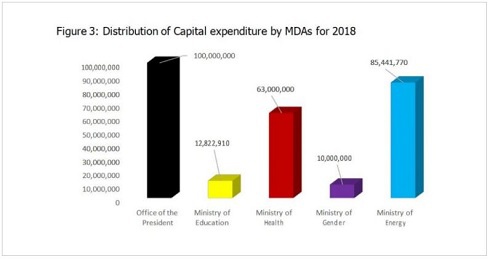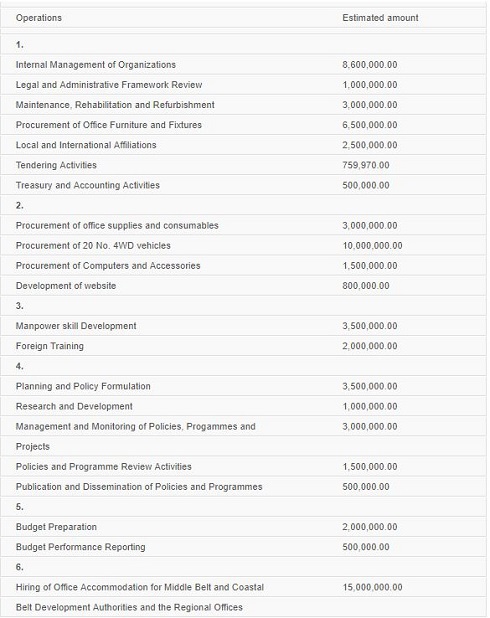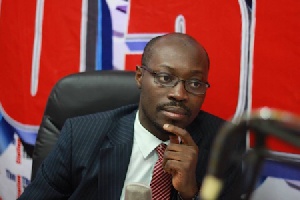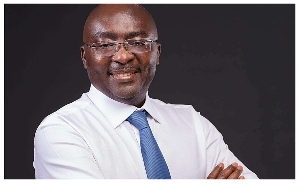Opinions of Monday, 25 December 2017
Columnist: Cassiel Ato Forson
Protecting the public purse indeed
After the approval of the 2018 Budget Statement, which the Minority in Parliament abstained from voting due to the legal breaches, Parliament is now at the crucial stage of reviewing how the 2017 Expenditure Allocations were spent, and debating the 2018 Expenditure Estimates for Ministries, Departments and Agencies (MDAs). Some critical issues have emerged in the course of the review and debate that the Minority will like to bring to the attention of Ghanaians in the spirit of engaging, informing, and educating them against the background of “Protecting the Public Purse” that His Excellency, Nana Addo Dankwa Akufu-Addo has touted himself as a leading crusader of the cause.
The Budgetary Allocation and Wasteful Expenditure at the Office of the President in recent times are now topical.
A total budget of over one billion new cedis (GHC 1,269,392,402), (equivalent to one trillion old cedis), was approved for the Office of the President in the 2017 budget. Out of the total amount, about 37 million new cedis (GHC 37,255,287) was approved for compensation, 152 million new cedis (GHC 151,739,332) for goods and services, and 1.3 billion new cedis (GHC 1,269,392,402) for capital expenditure.
Within the space of nine (9) months (Jan – Sept. 2017), the Office of the President spent a total of about 76 million new cedis (GHC 76,108,388.94) on goods and services. 69 million new cedis (GHC 68,458,797.94) of this amount was spent at the Office of the Chief of Staff, and 4 million new cedis (GHC 3,831,270.00) at the Vice President’s Secretariat
We would humbly like to ask, on behalf of fellow Ghanaians, what kind of purchases of goods and services will amount to about 72 million new cedis (GHC 72,290,067.94) for the Office of the Chief of Staff and VEEP Secretariat within 9 months?
Putting this in proper perspective, the immediate effect of the wasteful expenditure at the Presidency is that key growth sectors are denied resources to spur economic growth and development
2018 Budget
This situation is not going to be different in 2018. The total budget estimates for the Office of the President for 2018 is GHC 454,167,449.
Table 1: 2018 budget estimates for Office of the President

It is intriguing to note that the budget estimate for goods and services at the Presidency far exceeds the total capital expenditure of GHC 257,689,610 for the Ministry of Trade and Industry (about GHC 172 million) and the Ministry of Energy (about GHC 85 million). In fact the total capital expenditure of about GHC 146.6 million for 3 strategic MDAs: the Ministry of Water Resources and Sanitation (GHC 60 million); Ministry of Works and Housing (about GHC 80 million); and the Ministry of Communications (6.6 million); does not add up to the budget estimate for goods and services at the Presidency.
The Ministry of Railway Development is allocated GHC 150,000,000 for capital expenditure for 2018, whilst the Presidency gets GHC 272,497,855 for Goods and Services.
The total capital expenditure of 72.8 million new cedis for the Ministry of Education (GHC 12.8 million) and Ministry of Water Resources and Sanitation (GHC 60 million) does not add up to the cost of renovating the Flagstaff House and the Peduase Lodge (100 million new cedis (GHC 100,000,000). We, therefore, ask: what are the priorities of the current government? Is it the renovation of the Flagstaff House and the Peduase Lodge or the construction of educational infrastructure for the over-crowded Senior High Schools.
The points made are illustrated graphically below.



Mr. President, the good people of Ghana strongly opposed the creation of some of your Ministries but you decided to ignore the call from the very people who elevated you to occupy the Number One Office of the Land. You also ignored the fiscal impact of the creation of these Ministries. The 2017 and 2018 Budget figures give credence to this stance by the good people of Ghana.
Even with a casual look at Table 1 below, one cannot help but marvel at the unnecessary and over-bloated expenditure allocations to the Ministry of Special Initiatives as discussed below.
The Ministry of Special Initiative has created an expenditure item titled Internal Management of Organizations, that will cost the tax payer over 8 million new cedis (GHC 8,600,000), and another titled Local and International Affiliations that will cost the tax payer 2.5 million new cedis (GHC 2,500,000). These huge expenditure allocations to finance these specific activities when the Ministry is yet to properly roll out the implementation process of its initiatives.
Under item 2, 10 million new cedis (10,000,000) has been allocated for the purchase of 20 4WD vehicles. Is it prudent for a Ministry to have 20 4WD vehicles at its disposal? Furthermore, one wonders about the allocation of 0.8 million new cedis (GHC 8000,000) for the development of a website, which is more than the submitted cost of a 4WD vehicle (GHC 500,000).
Under item 4, 3 million new cedis (GHC 3,000,000) has been allocated for the Management and Monitoring of Policies, Programmes and Projects, and 1.5 million new cedis (GHC 1,500,000) for Policies and Programme Review Activities. Are the Policies and Programmes Review Activities not part of the Management and Monitoring of Policies, Programmes and Projects? Isn’t that a duplication?
Mr. President, what is there to show for the GHC 1,555,509 spent on capital expenditure in the 2017 budget?
Table 1: Over-bloated expenditure and duplication of expenditure items

Table 2 below, which is also part of the expenditure allocations for the Ministry of Special Initiatives suggests that the purpose for the $1 million per constitution policy initiative has outlived its usefulness. The VEEP made it clear to Ghanaians that the purpose of the initiative was to encourage a bottom-up approach to development by involving the constituents (grassroots) in the determination of their developmental needs. By the table below, the views and voices of the people are ignored in determining their priority projects
Table 2: Project expenditure for constituencies

Furthermore, for some of the items, the market prices are overstated. For instance, the current market price of an ambulance range between $18,000 and $40,000 (GHC 81,000)
GHC 180,000, at an exchange rate of 4.5), but the unit price, as stated in the budget, is GHC 379,596.30. Are the procurement of new ambulances necessary when those ordered from the past just need some maintenance? It is quite obvious from Table 2 that some constituencies may not benefit from some of the projects and there is no criteria to determine the distribution of the benefits. This can be very problematic.
Lastly, the list of projects in Table 2, portrays the duplication of work of traditional MDAs like the NDPC, MOH, MoF, etc. etc.
MERRY CHRISTMAS MR. PRESIDENT













